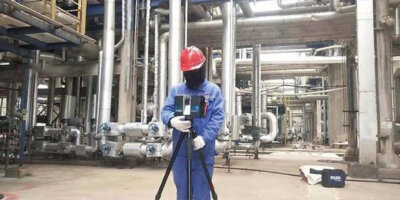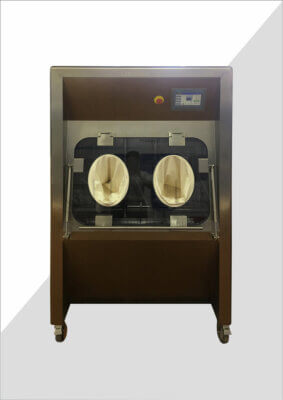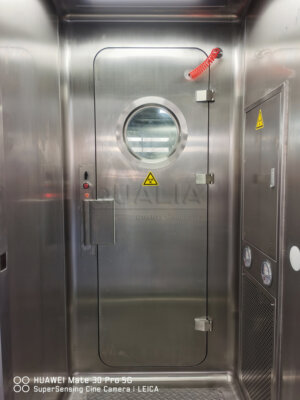The biopharmaceutical industry plays a crucial role in developing life-saving medications, but with great power comes great responsibility. One of the most critical aspects of this responsibility is the proper treatment of effluents generated during production processes. As the industry continues to grow and evolve, regulatory compliance for effluent treatment has become increasingly complex and stringent.
Effluent treatment in biopharmaceutical production involves a multifaceted approach to ensure that wastewater discharged from manufacturing facilities meets strict environmental standards. This process encompasses various technologies, methodologies, and regulatory frameworks designed to protect both public health and the environment. From advanced filtration systems to chemical treatment processes, companies must navigate a complex landscape of regulations to maintain compliance and uphold their commitment to sustainability.
The importance of regulatory compliance in effluent treatment cannot be overstated. It not only safeguards the environment and public health but also plays a significant role in maintaining the reputation and operational integrity of biopharmaceutical companies. As we delve deeper into this topic, we'll explore the key regulations, challenges, and best practices that shape the landscape of effluent treatment in the biopharmaceutical industry.
As we embark on this exploration of regulatory compliance for effluent treatment in biopharmaceutical production, it's essential to understand that this field is dynamic and constantly evolving. New technologies, emerging contaminants, and shifting regulatory landscapes all contribute to the complexity of the subject. Throughout this article, we'll examine the various aspects of effluent treatment, from the fundamental principles to the cutting-edge technologies that are shaping the future of wastewater management in the biopharmaceutical sector.
Regulatory compliance for effluent treatment in biopharmaceutical production is a critical aspect of environmental stewardship and public health protection, requiring constant vigilance and adaptation to evolving standards and technologies.
| Aspect | Description | Regulatory Body |
|---|---|---|
| Effluent Guidelines | Specific pollutant limits for various industries | U.S. Environmental Protection Agency (EPA) |
| Pretreatment Standards | Requirements for discharges to publicly owned treatment works | EPA and local authorities |
| Best Available Technology (BAT) | Economically achievable treatment technology standards | EPA |
| Monitoring and Reporting | Regular testing and documentation of effluent quality | EPA and state environmental agencies |
| Risk Assessment | Evaluation of potential environmental impacts | Company-led, overseen by regulatory bodies |
What are the key regulations governing effluent treatment in biopharmaceutical production?
The regulatory landscape for effluent treatment in biopharmaceutical production is complex and multifaceted. At its core, these regulations aim to protect water resources, ecosystems, and public health from potentially harmful contaminants generated during the manufacturing process.
Key regulations include the Clean Water Act (CWA) in the United States, which sets the foundation for pollutant discharge limits and water quality standards. The Environmental Protection Agency (EPA) enforces these regulations through the National Pollutant Discharge Elimination System (NPDES) permit program. In Europe, the Water Framework Directive provides a similar regulatory structure, while other countries have their own specific regulations.
These regulations establish limits on various pollutants, including organic compounds, heavy metals, and biological agents. They also mandate the use of best available technologies (BAT) for treatment processes and require regular monitoring and reporting of effluent quality.
The U.S. EPA's Effluent Guidelines for Pharmaceutical Manufacturing (40 CFR Part 439) set specific limitations on pollutants discharged from facilities engaged in the manufacture of pharmaceutical products, including both chemical synthesis and biological processes.
| Regulation | Scope | Key Requirements |
|---|---|---|
| Clean Water Act | U.S. waterways | Pollutant discharge limits, water quality standards |
| NPDES | U.S. point source discharges | Permitting, monitoring, reporting |
| Water Framework Directive | EU water policy | Integrated river basin management, water quality objectives |
| Effluent Guidelines (40 CFR Part 439) | U.S. pharmaceutical manufacturing | Specific pollutant limitations for the industry |
How do biopharmaceutical companies ensure compliance with effluent treatment regulations?
Ensuring compliance with effluent treatment regulations is a multifaceted process that requires a comprehensive approach from biopharmaceutical companies. It begins with a thorough understanding of all applicable regulations and continues through the implementation of robust treatment systems and rigorous monitoring protocols.
Companies typically employ a combination of physical, chemical, and biological treatment methods to address the diverse range of contaminants present in their effluents. These may include advanced oxidation processes, membrane filtration, and biological treatment systems. QUALIA offers innovative solutions like their Effluent Decontamination System (EDS) for BSL-2, 3, and 4 liquid waste, which exemplifies the cutting-edge technologies available for compliant effluent treatment.
Regular monitoring and testing of effluent quality are essential components of compliance. This involves collecting samples, conducting laboratory analyses, and maintaining detailed records of treatment processes and discharge quality. Many companies also implement continuous monitoring systems to provide real-time data on effluent characteristics.
To ensure compliance, biopharmaceutical companies must establish a culture of environmental responsibility, invest in state-of-the-art treatment technologies, and maintain rigorous quality management systems that encompass all aspects of effluent treatment and discharge.
| Compliance Strategy | Description | Benefits |
|---|---|---|
| Risk Assessment | Identifying potential environmental impacts | Proactive management, targeted treatment |
| Technology Investment | Implementing advanced treatment systems | Improved effluent quality, regulatory compliance |
| Continuous Monitoring | Real-time tracking of effluent parameters | Early detection of issues, data-driven decision making |
| Staff Training | Educating employees on regulations and procedures | Enhanced compliance culture, reduced human error |
What are the challenges in maintaining regulatory compliance for effluent treatment?
Maintaining regulatory compliance for effluent treatment presents several challenges for biopharmaceutical companies. One of the primary difficulties is keeping pace with evolving regulations. As scientific understanding of environmental impacts grows and new contaminants of concern emerge, regulatory bodies frequently update their requirements, necessitating ongoing adaptations in treatment processes.
Another significant challenge is the variability in effluent composition. Biopharmaceutical production often involves complex and changing processes, leading to fluctuations in the types and concentrations of contaminants in wastewater. This variability can make it difficult to maintain consistent treatment efficacy and meet discharge limits.
The cost of compliance is also a considerable challenge. Advanced treatment technologies, monitoring equipment, and the expertise required to operate these systems can represent significant investments. Balancing these costs with the need for effective treatment and regulatory compliance is an ongoing challenge for many companies.
The emergence of new classes of pharmaceuticals, such as biologic drugs and gene therapies, introduces novel challenges in effluent treatment, as traditional methods may not be sufficient to address these complex molecules and their potential environmental impacts.
| Challenge | Impact | Mitigation Strategy |
|---|---|---|
| Evolving Regulations | Requires frequent system updates | Proactive monitoring of regulatory changes, flexible treatment systems |
| Effluent Variability | Inconsistent treatment efficacy | Robust process control, adaptable treatment technologies |
| Cost of Compliance | Financial burden on operations | Strategic investments, optimization of existing systems |
| Emerging Contaminants | Potential for non-compliance | Research and development of new treatment methods |
What role does risk assessment play in regulatory compliance for effluent treatment?
Risk assessment plays a pivotal role in regulatory compliance for effluent treatment in the biopharmaceutical industry. It serves as a systematic approach to identifying, evaluating, and prioritizing potential environmental and health risks associated with effluent discharge. This process is crucial for developing targeted and effective treatment strategies that not only ensure compliance but also protect the environment and public health.
The risk assessment process typically involves several steps, including hazard identification, exposure assessment, dose-response assessment, and risk characterization. For biopharmaceutical effluents, this might involve assessing the potential ecological impacts of active pharmaceutical ingredients (APIs), the bioaccumulation potential of certain compounds, or the risk of promoting antimicrobial resistance.
By conducting thorough risk assessments, companies can tailor their treatment approaches to address the most significant risks, allocate resources more effectively, and demonstrate due diligence to regulatory authorities. This proactive approach often leads to more robust compliance strategies and can help companies stay ahead of regulatory changes.
A comprehensive risk assessment framework, such as the one outlined in the EFPIA's Responsible Manufacturing Effluent Management Technical Guidance, provides a structured approach for companies to evaluate and mitigate the environmental risks associated with their effluents, thereby supporting regulatory compliance efforts.
| Risk Assessment Step | Description | Outcome |
|---|---|---|
| Hazard Identification | Identifying potential contaminants of concern | List of priority substances for treatment |
| Exposure Assessment | Evaluating potential environmental concentrations | Understanding of discharge impacts |
| Dose-Response Assessment | Determining ecological effects at various concentrations | Establishment of safe discharge limits |
| Risk Characterization | Integrating all data to estimate overall risk | Prioritized treatment strategies |
How do monitoring and reporting contribute to regulatory compliance in effluent treatment?
Monitoring and reporting are cornerstones of regulatory compliance in effluent treatment for biopharmaceutical production. These processes provide the data necessary to demonstrate compliance with discharge permits, track treatment efficacy, and identify potential issues before they lead to non-compliance.
Effective monitoring programs typically include a combination of continuous online monitoring for key parameters such as pH, temperature, and conductivity, as well as regular grab sampling for more complex analyses. These samples are analyzed for a range of pollutants as specified in the facility's discharge permit, which may include organic compounds, heavy metals, and biological indicators.
Reporting requirements vary depending on the regulatory jurisdiction but generally involve regular submission of monitoring data to the appropriate authorities. This may include monthly discharge monitoring reports (DMRs), annual compliance reports, and immediate notification of any permit exceedances or unusual discharge events.
The implementation of advanced data management systems and laboratory information management systems (LIMS) has greatly enhanced the ability of biopharmaceutical companies to collect, analyze, and report effluent monitoring data efficiently and accurately, supporting robust regulatory compliance programs.
| Monitoring Aspect | Frequency | Parameters |
|---|---|---|
| Continuous Online | Real-time | pH, temperature, conductivity, flow rate |
| Grab Sampling | Daily/Weekly | BOD, COD, TSS, specific pollutants |
| Bioassays | Monthly/Quarterly | Whole effluent toxicity, biodegradability |
| Compliance Reporting | Monthly/Annually | Discharge volumes, pollutant concentrations, permit compliance status |
What emerging technologies are shaping the future of regulatory compliance in effluent treatment?
The landscape of regulatory compliance in effluent treatment is being transformed by emerging technologies that offer enhanced treatment efficacy, improved monitoring capabilities, and greater process efficiency. These innovations are enabling biopharmaceutical companies to meet increasingly stringent regulations while optimizing their operations.
Advanced oxidation processes (AOPs) represent one of the most promising areas of development. These technologies, which include UV/H2O2 treatment, ozonation, and electrochemical oxidation, can effectively degrade complex organic compounds that are resistant to conventional treatment methods. This is particularly relevant for the removal of APIs and other emerging contaminants of concern.
Membrane technologies continue to evolve, with the development of high-flux, low-fouling membranes that can achieve superior separation of contaminants while reducing energy consumption. Nanofiltration and reverse osmosis systems are increasingly being employed to produce high-quality effluent suitable for reuse or safe discharge.
Artificial intelligence (AI) and machine learning are also making inroads in effluent treatment, enabling predictive maintenance of treatment systems, optimizing process control, and enhancing the interpretation of monitoring data. These technologies can help identify trends and anomalies that might otherwise go unnoticed, supporting proactive compliance management.
The integration of Internet of Things (IoT) devices and cloud-based data analytics platforms is revolutionizing effluent monitoring and reporting, providing real-time insights and facilitating more responsive and efficient regulatory compliance strategies.
| Technology | Application | Benefit to Compliance |
|---|---|---|
| Advanced Oxidation Processes | Degradation of recalcitrant compounds | Improved removal of APIs and emerging contaminants |
| Next-Gen Membrane Systems | High-efficiency separation | Enhanced effluent quality, potential for water reuse |
| AI and Machine Learning | Process optimization, predictive maintenance | Improved system reliability, proactive compliance management |
| IoT and Cloud Analytics | Real-time monitoring and data analysis | Enhanced reporting capabilities, faster response to potential issues |
How do international regulations impact global biopharmaceutical companies' effluent treatment strategies?
International regulations play a significant role in shaping the effluent treatment strategies of global biopharmaceutical companies. As these companies operate across multiple jurisdictions, they must navigate a complex web of regulatory requirements that can vary significantly from country to country.
One of the key challenges is harmonizing treatment approaches to meet the most stringent requirements across all operating locations. This often leads companies to adopt a "highest common denominator" approach, implementing treatment technologies and practices that exceed local requirements in some areas to ensure global compliance.
International agreements and guidelines, such as the Stockholm Convention on Persistent Organic Pollutants and the World Health Organization's guidelines on pharmaceuticals in drinking water, also influence regulatory frameworks and corporate strategies. These global initiatives drive the adoption of consistent standards and best practices across borders.
Global biopharmaceutical companies are increasingly adopting centralized environmental management systems that integrate regulatory requirements from multiple jurisdictions, enabling more efficient and consistent compliance across their international operations.
| Regulatory Aspect | Global Impact | Strategy |
|---|---|---|
| Varying National Standards | Complexity in compliance | Adoption of highest standards across all operations |
| International Agreements | Harmonization of practices | Proactive implementation of global best practices |
| Emerging Markets | New regulatory landscapes | Early engagement with local authorities, technology transfer |
| Global Supply Chains | Extended responsibility | Supplier audits, effluent management throughout the value chain |
Conclusion
Regulatory compliance for effluent treatment in biopharmaceutical production is a complex and evolving field that demands constant attention and innovation. As we've explored throughout this article, the challenges are multifaceted, ranging from keeping pace with changing regulations to implementing cutting-edge technologies that can effectively treat increasingly complex effluents.
The importance of robust compliance strategies cannot be overstated. They not only ensure legal adherence but also demonstrate a company's commitment to environmental stewardship and public health protection. Risk assessment, comprehensive monitoring and reporting, and the adoption of advanced treatment technologies all play crucial roles in achieving and maintaining compliance.
As the biopharmaceutical industry continues to grow and evolve, so too will the regulatory landscape surrounding effluent treatment. Companies that invest in flexible, forward-thinking compliance strategies and embrace emerging technologies will be best positioned to navigate these challenges successfully. Moreover, those that go beyond mere compliance to lead in environmental performance will likely find themselves at a competitive advantage in an increasingly environmentally conscious market.
The future of effluent treatment in biopharmaceutical production lies in the integration of advanced technologies, data-driven decision making, and a holistic approach to environmental management. By staying abreast of regulatory changes, investing in innovative solutions, and fostering a culture of environmental responsibility, biopharmaceutical companies can ensure that they continue to produce life-saving medications while minimizing their environmental footprint.
As we look to the future, it's clear that regulatory compliance for effluent treatment will remain a critical aspect of biopharmaceutical production. Those companies that view compliance not as a burden but as an opportunity for innovation and leadership will be well-positioned to thrive in this dynamic and important field.
External Resources
Wastewater Disposal Requirements for Pharmaceutical Manufacturing – This EPA page provides comprehensive information on effluent guidelines for the pharmaceutical manufacturing industry, including regulatory requirements and technical documents.
Pharmaceutical Manufacturing Effluent Guidelines | US EPA – An official EPA resource detailing the specific effluent guidelines and standards for pharmaceutical manufacturing, including regulatory documents and analytical methods.
Responsible Manufacturing Effluent Management Technical Guidance – This EFPIA document provides technical guidance on responsible effluent management in pharmaceutical manufacturing, focusing on antimicrobial resistance and environmental risk assessment.
WHO Good Manufacturing Practices for Pharmaceutical Products – World Health Organization guidelines that include considerations for environmental protection and waste management in pharmaceutical production.
Process-Based Self-Assessment Tool for the Organic Chemical Industry – An EPA tool designed to help facilities in the organic chemical industry, including some pharmaceutical processes, to assess and improve their environmental management systems.
Compliance Assistance for the Pharmaceutical Manufacturing Sector – EPA resources to assist pharmaceutical manufacturers in understanding and complying with environmental regulations, including those related to effluent treatment.
- European Medicines Agency (EMA) Guideline on the Environmental Risk Assessment of Medicinal Products for Human Use – This guideline provides a framework for assessing the environmental risks of pharmaceuticals, which can inform effluent treatment strategies.
Related Contents:
- The Environmental Impact of Pharmaceutical Effluents: A Comprehensive Assessment
- Navigating the Complexities of High-Potency API Effluent Management
- Effluent Decontamination: Ensuring Pharmaceutical Safety
- Assessing and Managing Risks in EDS Operations
- Revolutionizing Pharmaceutical Effluent Treatment: Emerging Technologies
- Effluent Decontamination Systems: Safeguarding Malaysia’s Environment
- Effluent Decontamination Systems: Safeguarding Pharmaceutical Waste Management
- Revolutionizing Pharmaceutical Wastewater Treatment
- Streamlining Effluent Decontamination: Continuous vs. Batch Processing






























